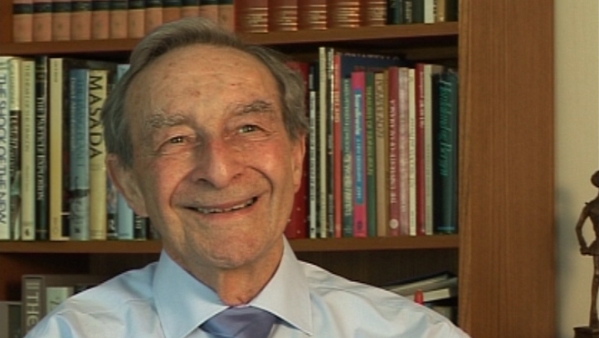The other part of the boron hydride work we did was quite different. We were reacting specific boron hydrides, B5, B6 and so forth. For example, we’d thermolise B5H9 with iron pentacarbonyl and we found that B5 is a pyramid of four hydrogens [sic – should be borons] in a base and an apex. The apex boron came off and iron tricarbonyl was there and we got a neat, very stable molecule. That would be a simple and straightforward action but what happened was that when one put other elements in like ruthenium, for example, the platinum metals, iridium, we got extraordinary mixtures and completely unprecedented structures where two boranes would join up by having a platinum unit in the middle of one or two platinums and so forth, and we were able to open up this new field of metallo-borane compounds to give a very rich range of chemistry, and the way we were able to make progress was because, firstly, many of these compounds were crystalline solids and the group got very expert at making the compounds, recrystalising them and then doing an X-ray crystal structure and so it wasn’t necessary to analyse any more by analytical chemical means. We would have crystals with a known structure and you would know precisely what it was. And that was made possible, of course, by the advent of computers which though we haven’t mentioned them before were actually coming into use about this time. In the early ‘60s you would rarely see a computer in a chemistry lab. You certainly wouldn’t see a desktop computer. The university might have a mainframe computer and many of the experiments would be connected by a landline to the main computer. But the idea of having a computer integral with the apparatus was something in the ‘60s and ‘70s which was not feasible.






